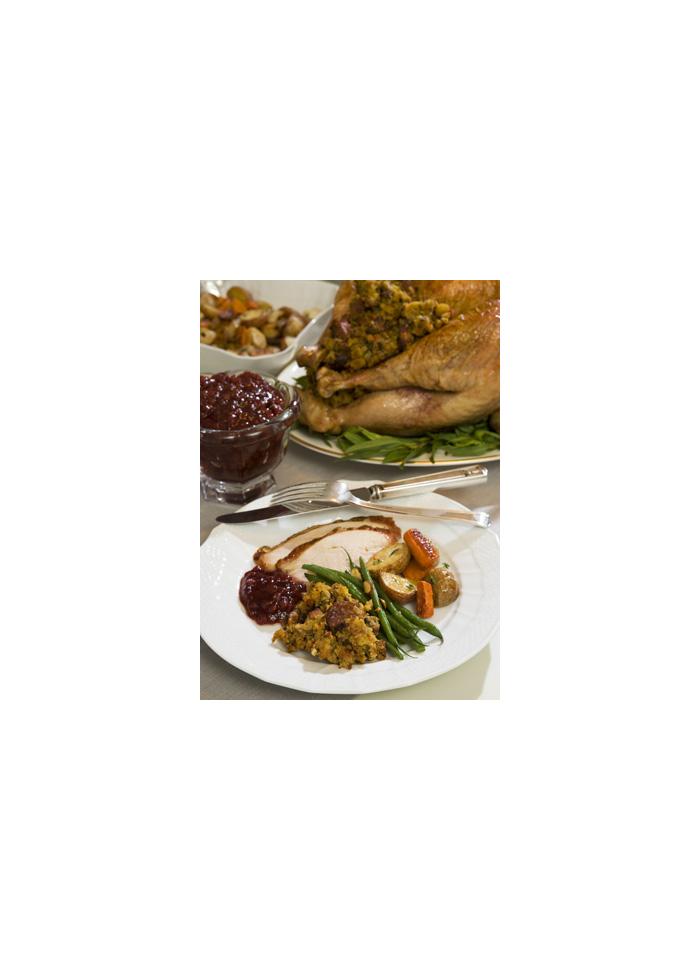
Other areas /
Google Ads
The American ThanksgivingFor our readers outside the U.S., here’s a brief history of the American Thanksgiving: |
SUBSCRIBE SEND AS EMAIL |

|
|
| 1 | |
|
The first Thanksgiving on American soil goes back to the first Pilgrims and their second year, 1621, at the settlement in Plymouth, Massachusetts. The first winter was devastating to the Pilgrims. Less than half of the original group survived, and if it hadn’t been for the help of the local native Americans, the remaining settlers may not have made it either.
In the spring, the tribes taught the Pilgrims how to tap the maple trees for sap, which plants were poisonous and which had medicinal powers, and how to plant and fertilize the Indian corn. The next October harvest was very successful, and the Pilgrims found themselves with enough food to put away for the winter. There was corn, fruits and vegetables, fish to be salted, meat to be cured over smoky fires. The Pilgrims had beaten the odds, and it was time to celebrate. The Pilgrim Governor William Bradford proclaimed a celebration to be shared by the colonists and neighboring native Americans. This first celebration lasted for three days. Everyone played games, ran races, marched and played drums. According to many historians, though, this event was not viewed at the time as “Thanksgiving;” that first occurred in 1623, and it was a religious observance rather than a feast. The custom of an annual Thanksgiving continued through the years. In the late 1770s, a day of national thanksgiving was suggested by the Continental Congress. In 1817, New York State adopted Thanksgiving Day as an annual custom, and many other states followed suit through the 1800s. Thanksgiving didn’t become a formal national holiday until 1863, however, when President Abraham Lincoln proclaimed a national day of Thanksgiving. Since then, each U.S. president has issued a Thanksgiving Day proclamation, usually designating the fourth Thursday of each November as the holiday. Sources: www.holidays.net, en.wikipedia.org Turkey Trivia Ninety percent of American homes eat turkey on Thanksgiving. Fifty percent eat turkey on Christmas. Close to 300 million turkeys are raised in the U.S. More than 45 million turkeys are cooked and eaten during Thanksgiving. Americans feast on approximately 535 million pounds of turkey on Thanksgiving. The average weight of turkeys purchased for Thanksgiving is 15 pounds. A 15-pound turkey typically has about 70% white meat and 30% dark meat. When U.S. astronauts Neil Armstrong and Edwin Aldrin sat down to eat their first meal on the moon in their historic 1969 voyage, their foil food packets contained roasted turkey and all the trimmings. Americans' love of turkey has soared. Consumption based upon USDA data indicates that consumption went from 8.1 lb per year and person in 1980, to 18 lb in 2001. On a yearly basis, Californians are the biggest turkey eaters in the country. They eat three pounds more turkey than the average American consumer. Turkeys are able to adapt to a wide variety of habitats. However, most turkeys are found in hardwood forests with grassy areas. Turkeys have heart attacks. When the Air Force was conducting test runs and breaking the sound barrier, fields of turkeys would drop dead. Turkeys can drown if they look up when it is raining. Turkeys spend the night in trees. They fly to their roosts around sunset. A wild turkey has excellent vision and hearing. Their field of vision is about 270 degrees. This is the main reason they continue to elude some hunters. A spooked turkey can run at speeds up to 20 miles per hour. They can also burst into flight approaching speeds between 50-55 mph in a matter of seconds. Benjamin Franklin wanted the national bird to be a turkey. Source: Aristotle.net, woodbridgechips and other trivia sources |
Other articles on Food / Immigrant Chefs in Manhattan Princess Cake fit for a Tsar Chef Sheri Kimball’s Lingonberry pizza Chef Sohlberg’s Baked cod Chef Andersson’s Floating Cheesecake Chef Johansson’s Lingonberry soufflé Scandinavian Thanksgiving in New England
|
800 827 9333 © Copyright Nordic Reach 2008